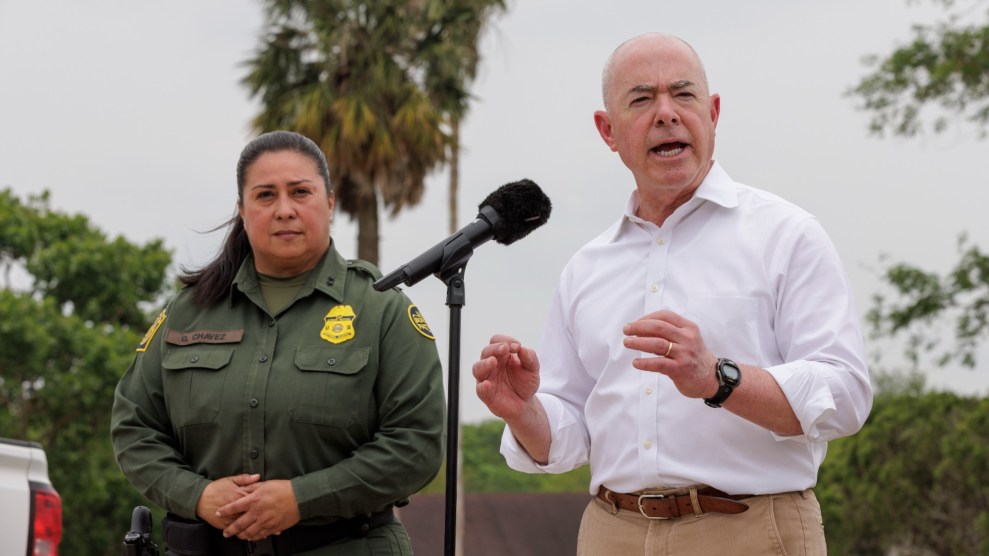
DHS Secretary Alejandro Mayorkas in Texas.Michael Gonzalez/Getty
The Department of Homeland Security is preparing for a spike in encounters at the US-Mexico border, as a Covid-19 era policy agents have used to quickly turn away migrants is set to expire soon. “The situation at the border is a very serious one, a very challenging one and a very difficult one,” DHS Secretary Alejandro Mayorkas admited from Brownsville, Texas on Friday. But, citing new restrictive asylum plans the Biden administration is putting in place, he warned away those who, believing “false information,” think the change will make it easier to cross and stay: “The border is not open, it has not been open, and it will not be open subsequent to May 11.”
The expiring policy, known as Title 42 after the obscure public health code provision that enabled it, was put into place by the Trump administration in March 2020 at the height of the pandemic. It used it, as has the Biden administration, to expel asylum seekers millions of times to Mexico or their countries of origin without hearings. Not long after the policy was triggered, it became clear it had little basis in science or in any public health imperative. It also placed asylum seekers in harm’s way, as they were forced to make increasingly risky and repeated attempts at crossing the border, which helped drive more than 2 million border encounters—a record number reflecting multiple tries. Ahead of May 11, when Title 42 sunsets, the government has announced plans to require migrants to make appointments through a flawed CBP mobile application before arriving at the border. With few exceptions, any asylum seeker who isn’t first denied protection by another country will be ineligible for entry.
If Title 42 failed as a border management tool, it was never intended to be one. It is, after all, a public health order. The policy “is the aberration, not the norm,” tweeted Aaron Reichlin-Melnick, policy director at the American Immigration Council. “Every part of the chaos [the Biden administration has] been seeing has happened under it.” Nonetheless, Republicans and some Democrats insist on keeping it—or some version of it—in place. Sens. Kyrsten Sinema (I-Ariz.) and Thom Tillis (R-N.C.) have introduced legislation to enact a temporary two-year authorization to expel migrants, making it clear that, for many supporters of the policy, it was never about the pandemic. “Since the Title 42 authority was based on the existence of a public health emergency,” their press release states, “this legislation gives the administration temporary expulsion authority that is not tied to public health.”













